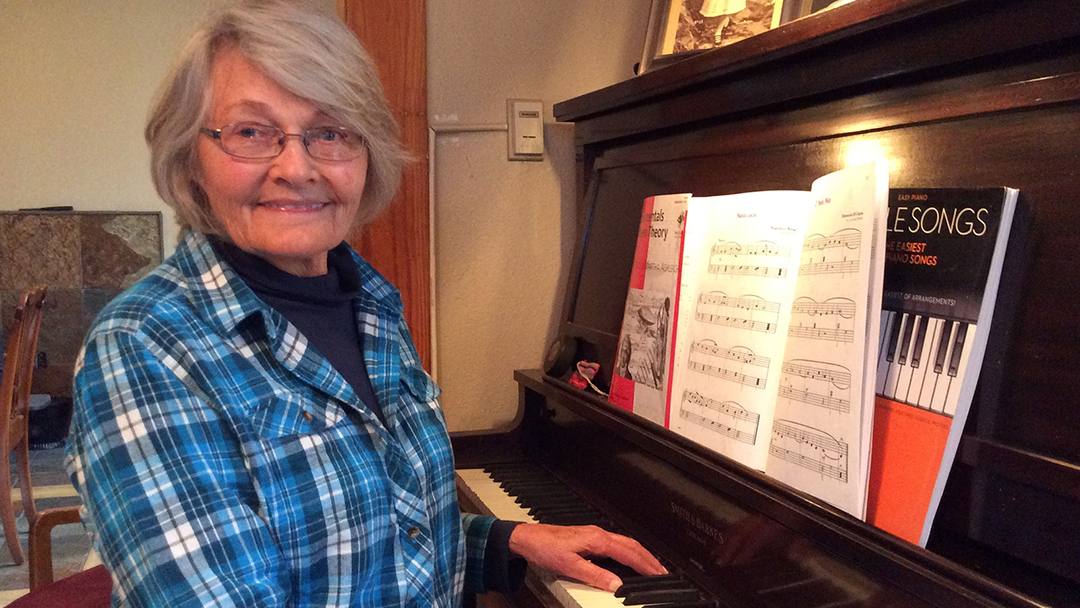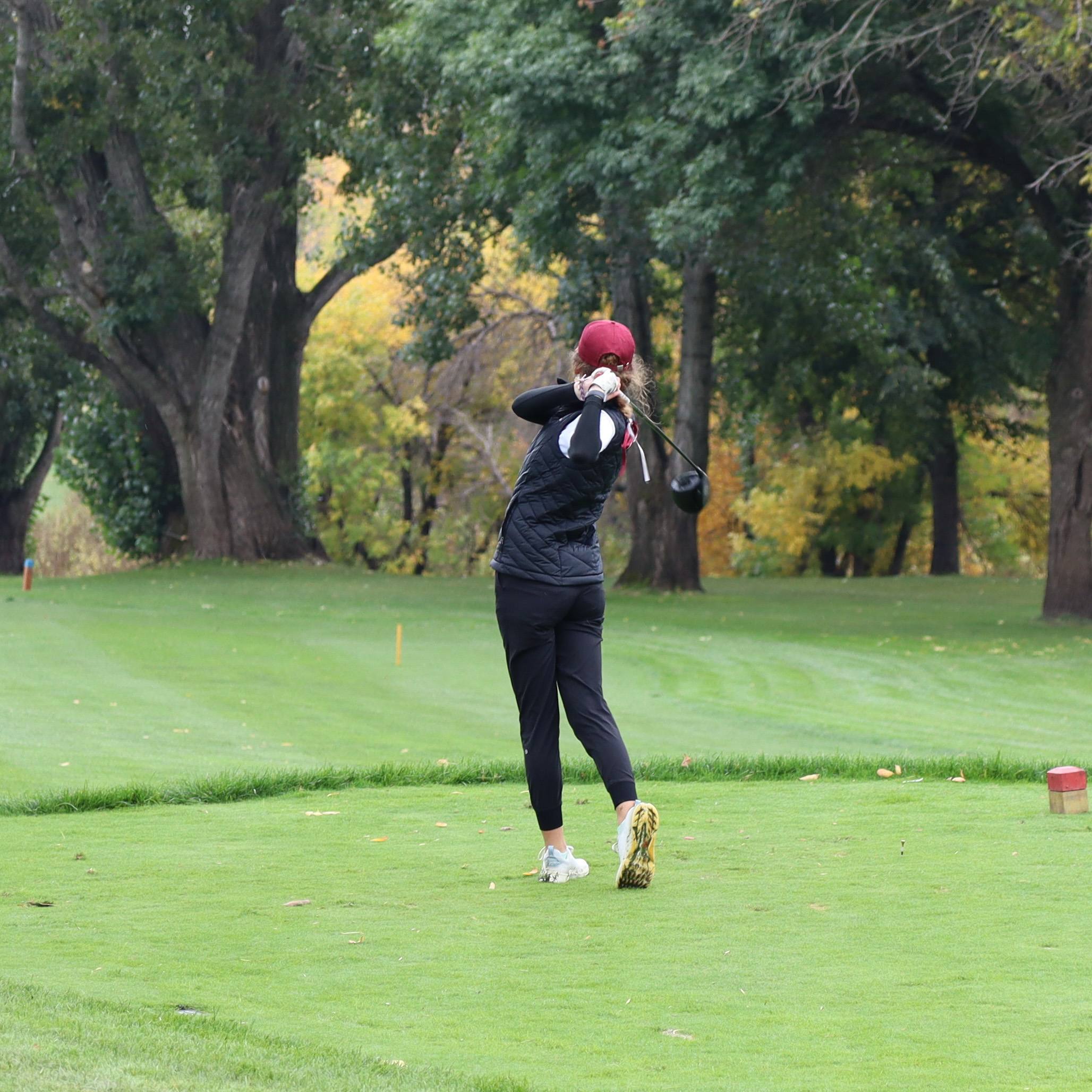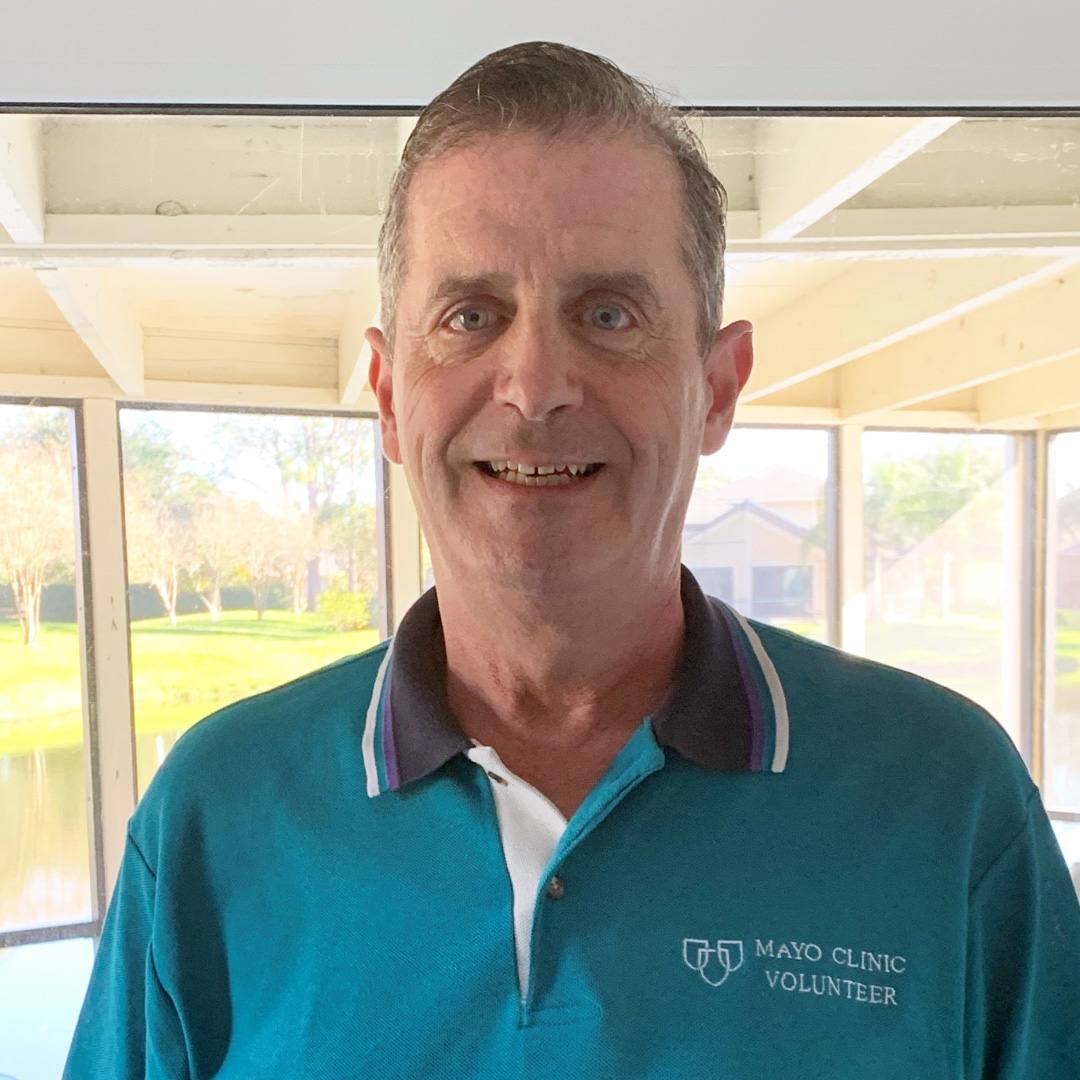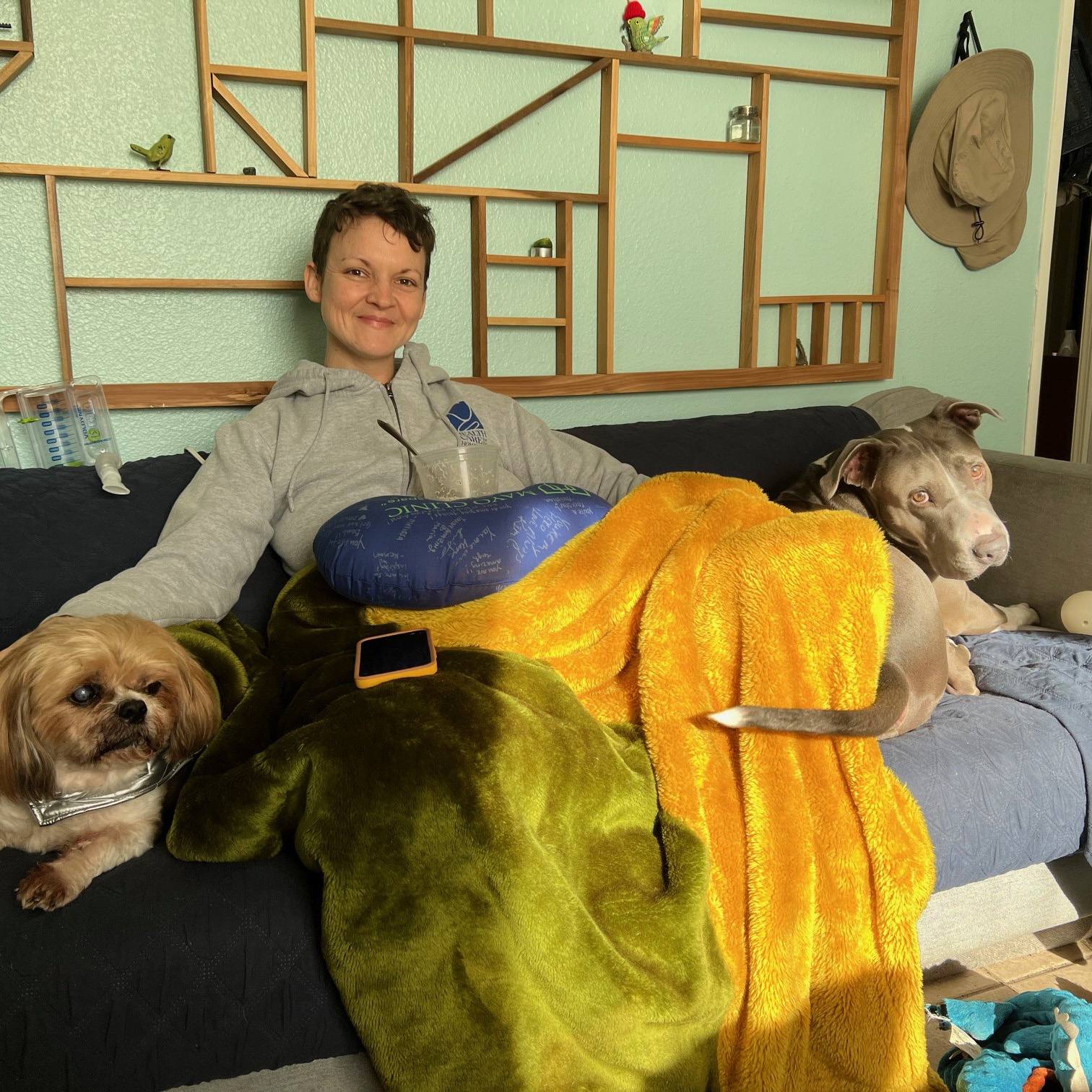-
Sharing Mayo Clinic
Cochlear Implant Allows Judith Collins to Relish Her Life Again
Over time, progressive hearing loss thwarted Judith Collin's enjoyment of family, friends and activities. Now a cochlear implant has restored her ability to enthusiastically engage with the people and pastimes she loves.
Over the course of an exciting career, Judith Collins has been a professor of psychology, an author and a CIA officer. But 27 years ago, when she turned 50, a daunting problem began creeping into her busy life. She started to lose her hearing.
"I was teaching at Texas A&M University, and at first I didn't really notice it because it came on so gradually," Judith says. "When we had class in a huge auditorium and my students would ask questions, I couldn't hear them very well."
She went to see an audiologist at Mayo Clinic's Rochester campus and was prescribed hearing aids. Although they helped, over time Judith's hearing became progressively worse — even with the aids. Her Mayo Clinic care team recommended a cochlear implant. It would take some time and reassurance, however, for her to warm up to that idea. But eventually Judith agreed to move forward with the implant surgery. Now she's thrilled that she did.
"The cochlear implant has been such a miracle for me," Judith says. "I can hear my family. My husband and I can talk. I can attend Bible study. I'm taking piano and watercolor lessons. I'm going to ballgames. I can enjoy life because I can hear."
An increasing concern
When she first started wearing hearing aids, Judith still struggled to hear well in some situations. But she found ways to work around that. During speaking engagements in front of large audiences, she couldn't hear the questions during the Q&A sessions, so she enlisted help.
"My assistant had a mini-mike that was synchronized with my hearing aid," Judith says. "She would go over to the audience member and repeat the question, so I could hear it."
To overcome the problem with medium-size groups, Judith would hand out index cards for people to write their questions.
Her hearing became less of a problem in 2000 when she joined the CIA. Her work there involved meeting with small groups or with individuals one on one — settings in which she could easily hear her colleagues.
Gradually, however, Judith began to have trouble following phone conversations due to poor hearing. In 2010, she began seeing Charles Beatty, M.D., a Mayo Clinic otorhinolaryngologist.
Another option
After evaluating Judith's condition, Dr. Beatty suggested a cochlear implant. The surgically implanted electronic device helps people to hear by bypassing damaged portions of the inner ear and directly stimulating the hearing nerve.
Cochlear implants use an external sound processor similar to a behind-the-ear hearing aid. The processor captures sound signals and transmits them to a receiver implanted under the skin behind the ear. The receiver sends the signals to electrodes implanted in the snail-shaped inner ear, called the cochlea.
Cochlear implants can restore hearing across all frequencies, and improve clarity and speech understanding — all limitations of hearing aids. For example, people with hearing loss typically have some hearing in the lower frequencies, but they lose the higher frequencies. While a hearing aid can amplify the lower frequencies, it does little to help with the higher ones. Cochlear implants restore the low, middle and high frequencies.
"I was worried that if the cochlear implant didn't work, I would lose all the hearing in my left ear." — Judith Collins
Despite the potential benefits, Judith was apprehensive about the surgery. It wasn't until her fourth annual checkup with Dr. Beatty in 2014 that she was open to exploring the option of a cochlear implant for her left ear, in which her hearing loss was most severe.
"Dr. Beatty is such a gentle and kind man. I could tell he genuinely cared about me," Judith says. "But I still wasn't ready. I was worried that if the cochlear implant didn't work, I would lose all the hearing in my left ear."
Colin Driscoll, M.D., chair of Mayo Clinic's Department of Otorhinolaryngology Head and Neck Surgery, understands that fear.
"The surgery requires opening the inner ear, an extremely fragile structure. While the residual hearing patients have can often be preserved, it is possible to lose this function," he says. Dr. Driscoll notes that although the hearing that will be restored through the implant will be far better than the residual hearing that could be lost, "it is still scary for many patients."
An unrelenting decline
For three years, Judith's hearing continued to deteriorate. In time, she could barely communicate with her husband or participate in conversations at family gatherings. She began isolating herself.
"I quit going to Bible study," Judith says. "I was missing out on life, which was very painful because I'm a very social person."
"The complication rate is quite low, and the vast majority of patients benefit so much from this procedure. Most people struggle way too long with their hearing aids." — Colin Driscoll, M.D.
In 2017, Judith only had 20 percent hearing in her left ear. After doing some research and talking with a patient who had cochlear implant surgery at Mayo Clinic, Judith decided to meet with Dr. Driscoll. After conducting some specialized hearing tests and a medical evaluation, Dr. Driscoll and the cochlear implant team determined Judith would be a good candidate for a cochlear implant in her left ear.
"The complication rate is quite low, and the vast majority of patients benefit so much from this procedure. Most people struggle way too long with their hearing aids," Dr. Driscoll says. "The important thing is to have an experienced team of surgeons and audiologists help you through the process."
A clear success
Judith decided to move forward with the operation. She recalls how warm and kind everyone was when she arrived for her surgery on Oct. 23, 2017.
"It was the most caring and comforting environment. Everybody came in and introduced themselves: the nurses, the anesthetists, the doctors," Judith says. "The next thing I knew, I was back in my room, and Dr. Driscoll was standing there saying everything went perfectly."
The surgery takes one to two hours and involves placing the device under the skin behind the ear and carefully threading a thin flexible wire with electrodes into the cochlea.
"I'm myself again. And it's just so wonderful." — Judith Collins
People come back between two and four weeks after surgery to have the device activated. An audiologist programs the implant, helps patients understand how to use it, and makes periodic adjustments to maximize its performance.
"The cochlea is laid out so the low pitches are at one end and the high pitches are at the other, almost like the keyboard of a piano," Dr. Driscoll says. "The electrodes from the implant lie across the cochlea and stimulate the part of the 'keyboard' that represents the frequency of the sound the person is hearing."
One month after the procedure, Judith's hearing in her left ear was up to 70 percent. With her hearing restored, she has been able to re-engage with her family, work and activities.
"I'm myself again," Judith says. "And it's just so wonderful."
HELPFUL LINKS
- Learn more about cochlear implants and hearing loss.
- Explore the cochlear implant process at Mayo Clinic.
- Join a discussion about eye, ear, nose and throat conditions on Mayo Clinic Connect.
- Request an appointment.








